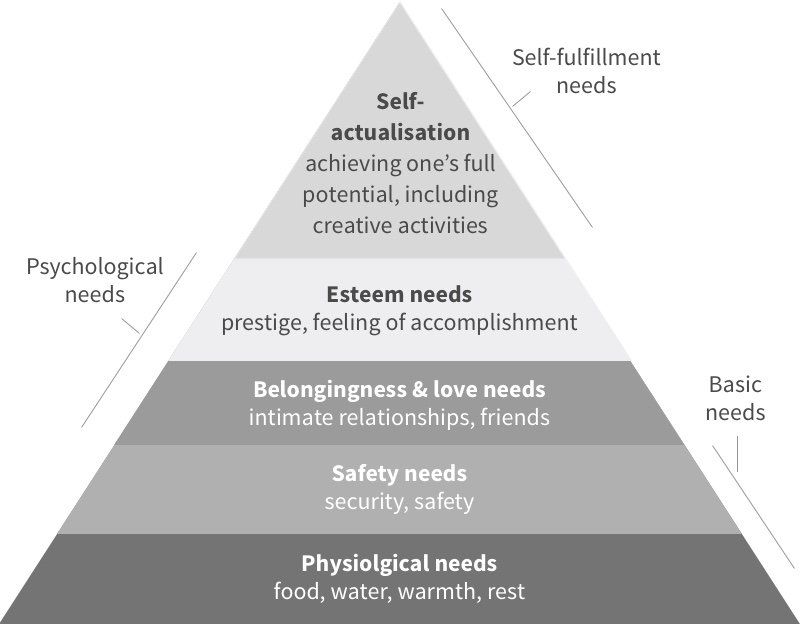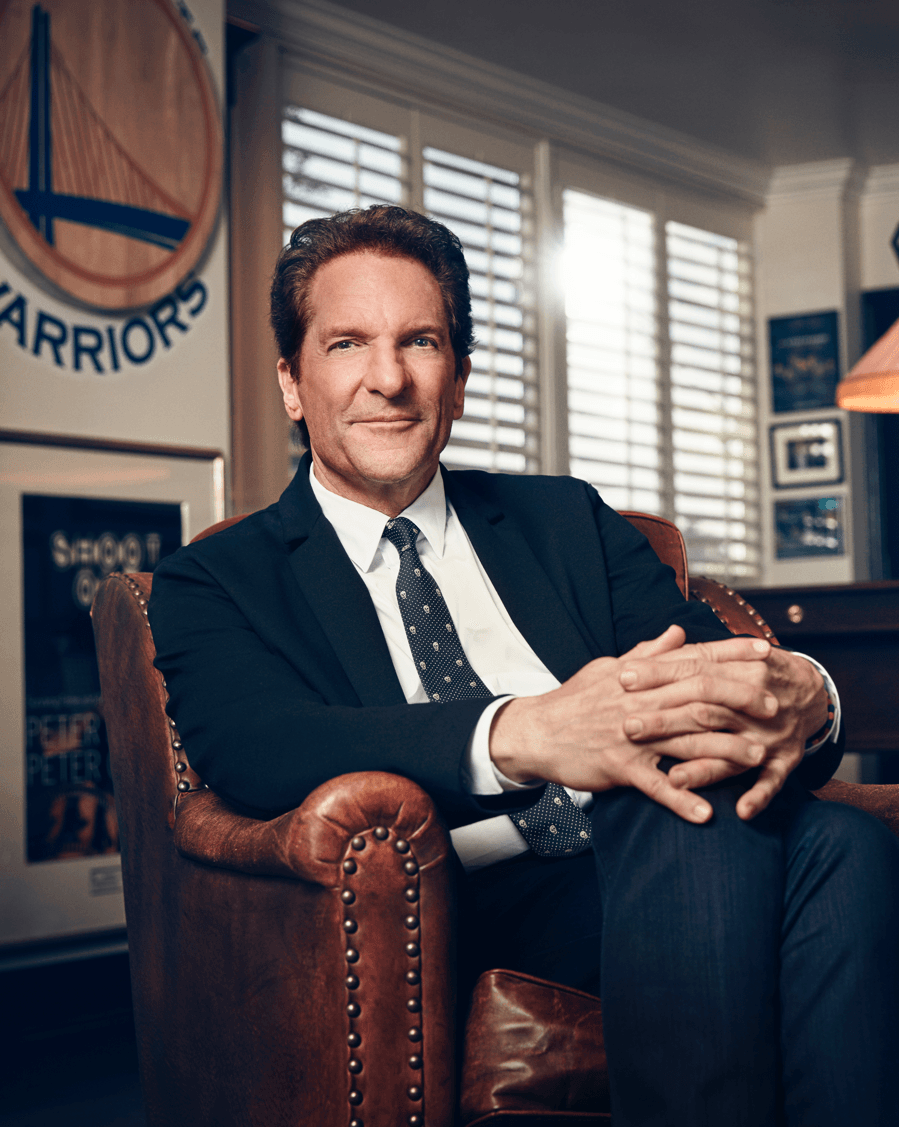Creating an Extraordinary Life Through Entrepreneurship
Discovering your core identity, awakening to opportunity, and envisioning the future as a Life Entrepreneur.
- our personal history
- current circumstances
- relationships
- Utility - friends who are useful
- Pleasure - friends whose company we enjoy
- Virtue- friends that “lift us to strive and become better people” (45)
When our basic and psychological needs are satisfied, we crave an opportunity that helps us grow. We call this the need for self-fulfillment. Addressing these needs requires a great deal of internal reflection including realizing our skills, talents, and knowledge in a specific area that represent our strongest assets. In addition to identifying strengths, we must recognize what our weaknesses are and attract people with strengths which we do not possess. We must be able to ask ourselves, "Am I satisfied with what I am doing?" in order to reach our full potential. Why? Happiness is not created from success - titles, promotions, etc.. Instead, success comes from the happiness we receive from what we build - drawing upon our creative instincts to maximize our strengths and ability to impact others.
Identify ways to sustainably engage with creative activities that maximize your strengths. Success will follow.
By assessing what lies at our core we are being entrepreneurs by creating something “physical” – our everyday actions – “out of something internal” (40). That’s right. Even if you don’t operate a business, non-profit, or any organization you are still an entrepreneur because of the actions you produce everyday.
When we reach a point that our core identity – who we say we are – is in “total congruence” with our actions – what we do – we begin to reach a point of “authentic integrity” (60). This is the purpose behind the core identity of each and every life entrepreneur. They are constantly reflecting upon their internal and external elements and assessing if their actions are in line with their values. Striving to live with authentic integrity is unsurprisingly similar to authentic leadership. To be an authentic leader is to build relationships based upon an ethical foundation or core identity. An authentic leader must often times guide their followers by leading by example. This type of leader understands their purpose and operates with a sound values system.
2. Awaken to Opportunity that Best Fits You
After finding their core identity, the life entrepreneur is now ready to move onto the second step and seek out opportunity within their lives to engage in meaningful work.
There are three steps to awakening to opportunity:
- possessing a beginner’s mind
- breakthrough innovation
- assessing opportunity
Possessing a Beginner’s Mind
“The real voyage of discovery consists not in seeking new lands, but in seeing them with new eyes” (67). The first step in realizing the potential around you is to rid of all of your assumptions about a certain concept. Peter Guber, chairman of Mandalay Entertainment, tells a story of a young intern on a movie set who saved the movie because of their beginner’s mind. While planning Gorillas in the Mist, a 1988 movie that documented rare mountain gorillas in Africa, the team ran into serious trouble. They were trying to script the actions of the gorillas, but it was quite difficult to direct the actions of two hundred wild animals at an altitude of eleven thousand feet. With the project on the verge of collapsing due to budget concerns, a young intern voiced a novel idea at an emergency budget meeting. “What if we let the gorillas write the story?” (70) At first, the experienced filmmakers laughed. Then, they worked to see the intern’s idea from a different perspective. It turned out to be a “brilliant idea” (70). They would gather a bunch of film on the gorillas and script the entire movie after they shot the film based upon what the gorillas did on camera. The team shot the movie for half of the original budget and the movie raked in $61 million across the globe. Guber went onto say “her [the intern's] inexperience enabled her to see opportunities where we saw only boundaries” (70).
Breakthrough Innovation
The second stage in awakening to opportunity is breakthrough innovation. Innovation is often improperly linked to creativity. Gergen and Vanourek define creativity is “the act of producing new ideas, approaches, or actions” (73). Innovation, on the other hand, is the act of “generating and applying such creativity in a specific context” (73). The act of taking creativity and putting it to the test is something that requires commitment and it typically requires a team. Innovation reminds me of one of the two types of behavioral leadership known as process behaviors. Process behaviors deal with helping the team collaborate, making people feel comfortable, building commitment, and modeling principles that you want to see. The breakthrough innovator has to lead by exemplifying their core identity. By setting the tone, they create environments conducive to collaboration and innovation. Innovation implies change and it is “not uncommon for a leader to experience resistance” to change. This is why it is so important that the leader incorporates process behaviors and makes their team members feel comfortable in their workspace. By doing so, the group’s efforts will be greater than the sum of the individual contributions.
Assessing Opportunity
The last component to awakening to opportunity is assessing opportunity. Some leaders rely entirely on their gut, some rely on the advice of close friends/mentors, and some leaders look at the objective potential of a certain project. Gergen and Vanourek state that it does not matter how you choose the different options available to you. The point is that you are selective in the opportunities you take on and do not “get stuck, awash in options and awaiting that ever-elusive sign from above” (77). There will be times when you will have to “walk through some doors and forgo others” and we must learn to accept to prioritize what we allocate our resources to (77). If we try to accept every opportunity that we come in contact with, the result will be an inhibited ability to align all of them with our core identity. This is a fundamental breakdown of what it means to be a life entrepreneur because your actions will be different from what you say you stand for.
3. Envisioning the Future
Once the life entrepreneur has an understanding of their core identity and is capable of awakening to opportunity that aligns with their identity, they are ready for the third step - envisioning the future.
This is made up of three parts:
- creating a vision
- connecting the vision
- sharing the vision
Creating the Vision
Peter Northouse defines a vision as “a mental model of an ideal future state." The vision brings your core identity and opportunity awakening to life. Life Entrepreneurs define it as a statement that reflects the future of your personal, professional, and relational goals. It should be “unbounded by the status quo, vivid in its description” but broad enough to still be directional and not tactical (83). The vision statement should not include calculated future moves that you will make. Instead, it should only be a paragraph or two long shaping the direction of the horizon that you are headed towards.
Connecting the Vision
The second step in articulating your vision is connecting it to who you are. The vision statement should be continuously revisited by its author to ensure that it properly articulates their core identity. It is not unusual that life entrepreneurs must frequently update their vision statement based upon new “experiences and ongoing personal development” (88). These changes in internal and external elements that make up our core identity are only natural as we progress through life. In fact, failure does not lie with the life entrepreneur who constantly has to edit their vision statement because of rapid personal growth. Failure lies with the life entrepreneur who does not edit their vision statement amidst changing internal/external factors and a changing core identity.
Sharing the Vision
The third and final aspect to vision is sharing it. The life entrepreneur recognizes that their vision cannot be accomplished by themselves alone. They need to “recognize the power of a vision shared with the people in our lives: our spouses, friends, colleagues, and crew” (90). By holding virtuous relationships with the people around us, we can support them in their growth while they support our growth as well as our vision. How the leader forms their relationships with teammates, mentors, and partners is crucial to the execution of the vision. That is why, according to Peter Northouse, we must describe our vision to others “using inclusive language that links people to the vision and makes them part of the process."
My Thoughts on The Leadership Model
The life entrepreneur model incorporates pieces of authentic and behavioral leadership, but it most closely aligns with the transformational leadership model. In this model, the leader encourages their followers to change the status quo which is exactly what life entrepreneurs are challenged to do. The four I’s of transformational leadership - Individualized Consideration, Intellectual Stimulation, Inspirational Motivation, Idealized Influence - nearly mirror the three steps in being a life entrepreneur. The individual is mentored, challenged to be creative, called upon to cast their vision, and seen as a role model for the standard of the group. The transformational leadership model places a high value on the evolution of the leader but not as much of an emphasis on the follower. This is true for the life entrepreneur model as well. One recommendation I would make to the authors Gergen and Vanourek would be to place more of a focus on servant leadership and what the leader can do for the follower. Business success occurs when the user's feedback is seriously considered when building a product or service. This concept also applies to the life entrepreneur. Life entrepreneurial success occurs when friends, family, and team members' feedback is seriously considered when building relationships.
Case Study: Howard Schultz and Starbucks
To best recapitulate all three facets of being a life entrepreneur – seeking core identity, awakening to opportunity, and envisioning a future – I will tell the story of a famous life entrepreneur, Howard Schultz. Schultz grew up in a blue-collar family. One day, his father slipped on an ice patch at his job and broke his leg. His father lost his job and his health benefits. His parents decided at that moment that he would be the first one to go to college. After graduating from college, Schultz worked for Xerox. He was a cog in the corporate machine. He then got to a point and said, “This is not me” (90). He found a company that was selling more coffee in Seattle than anyone had ever seen before. It took him a year and a half to finally convince the founders of Starbucks to hire him. Schultz had a vision for Starbucks and shared it with the founders, but they didn’t have the same vision. Instead, he left Starbucks to realize his own vision with others. He started Il Giornale, a coffee shop that incorporated Italian espresso bars and re-created the barista magic in the United States. His newly started business wasn’t making money, his wife was pregnant, and his father in law sat him down and told him “you need to give up this hobby and get a job” (91). He almost folded right then and there, but his wife (who was eight months pregnant!) said, “no way, we’re going to do this” (91).
After rebounding and having a few successful years, Il Giornale bought out Starbucks and took on their name. Schultz states that the “culture and values of the company are its signature and its competitive difference…because people are hungry for authenticity…and something larger than themselves. But only if what [the customers] are looking at has a set of values and guiding principles that is compatible with their own” (92).
Schultz's story incorporates each of the three steps in what it means to become a life entrepreneur. He discovered his core identity and recognized that his job at Xerox didn’t align with it. He awakened to opportunity by seeing how successful barista bars were in Italy, but the original founders of Starbucks were not willing to share his vision. Instead, he started his own company with people who did share his vision and put himself in a position to align Starbucks' vision with his a few years later. The creation of Il Giornale allowed Schultz to hone in on what would become Starbucks’ competitive difference - social connections between customers and baristas + a strong values system. Schultz purchased Starbucks for $3.8 million in 1987. Today, in 2020, Starbucks has a company valuation of over $100 billion – talk about a return on investment for finding your core identity, awakening to opportunity, and envisioning the future.




